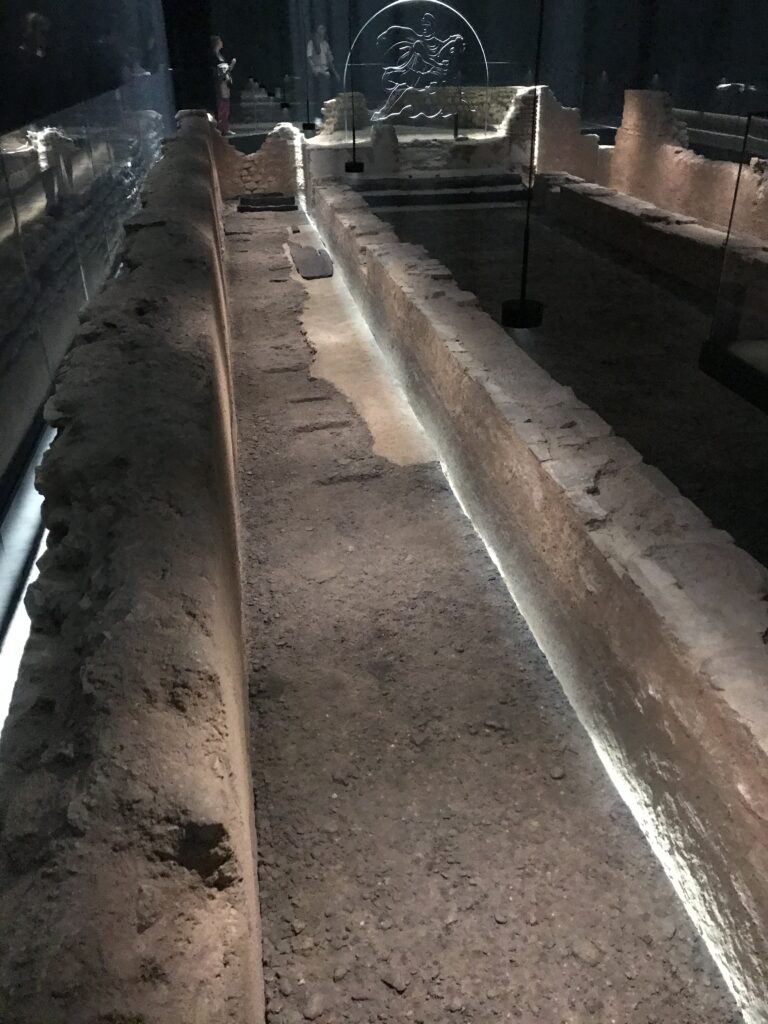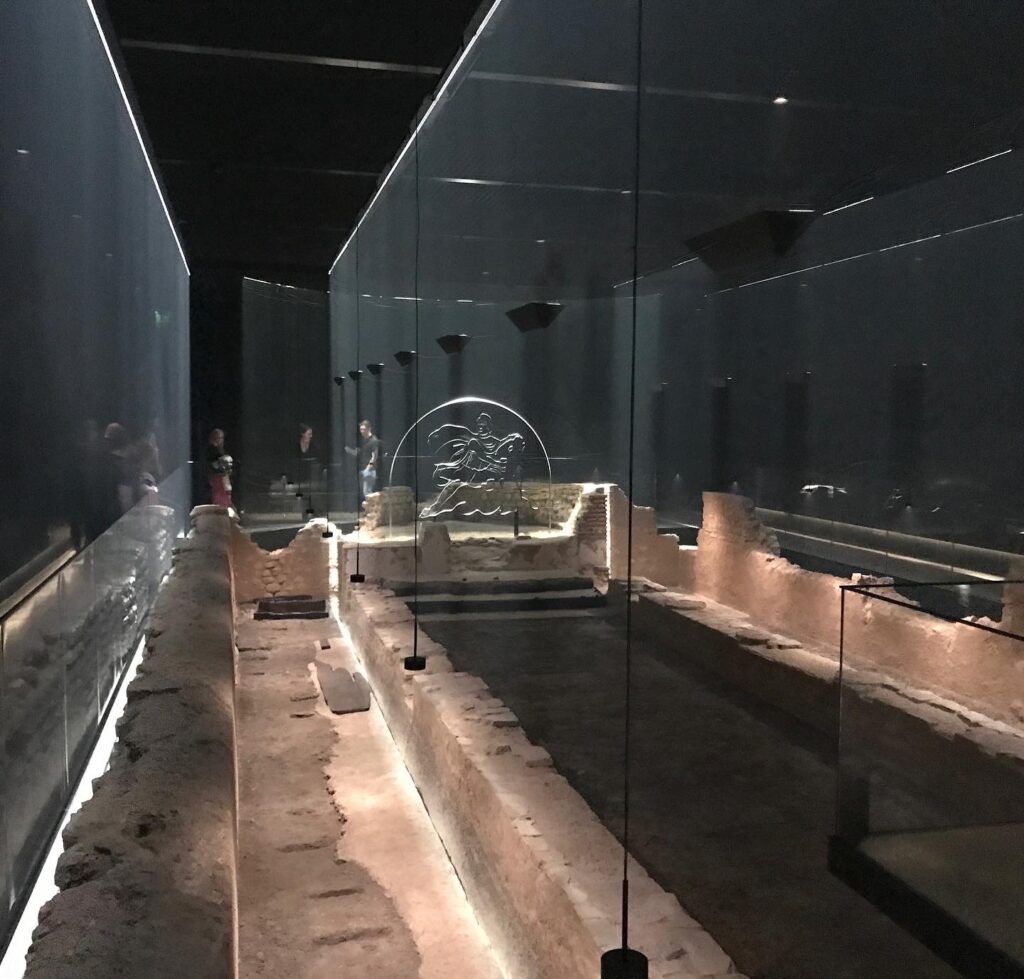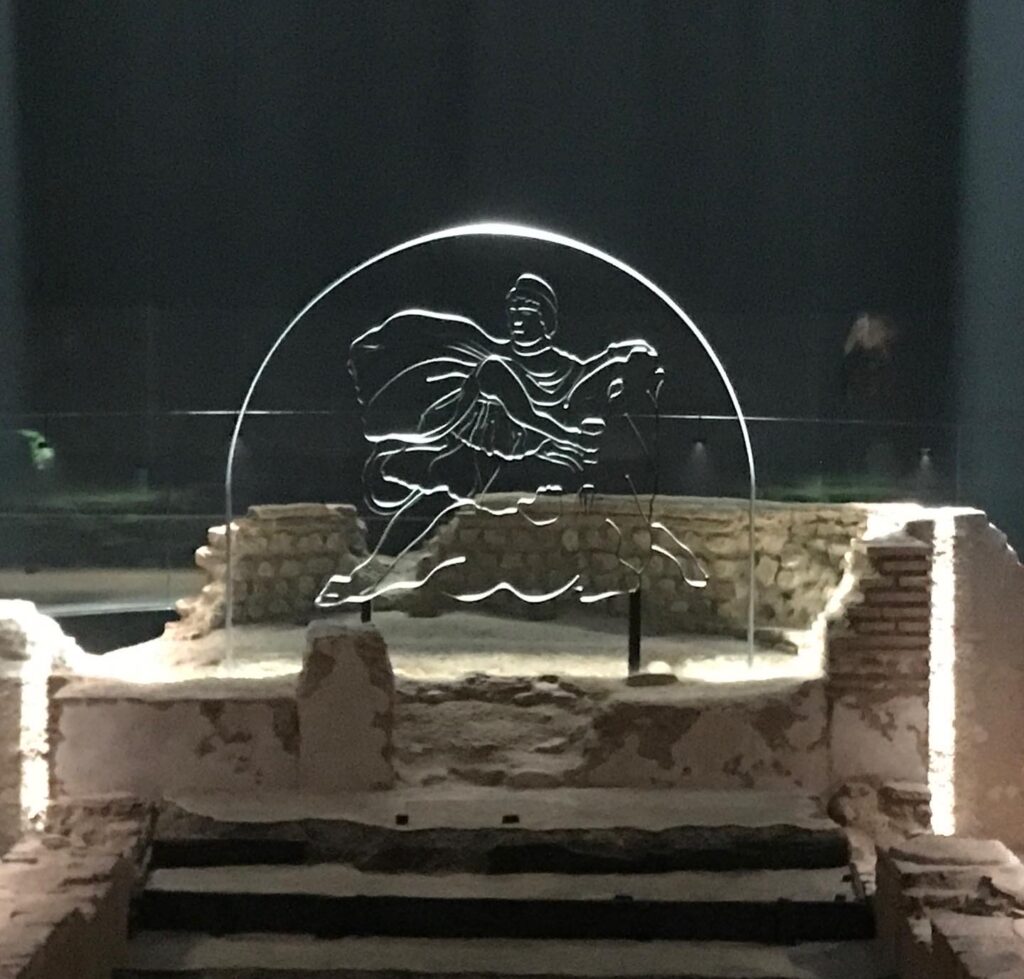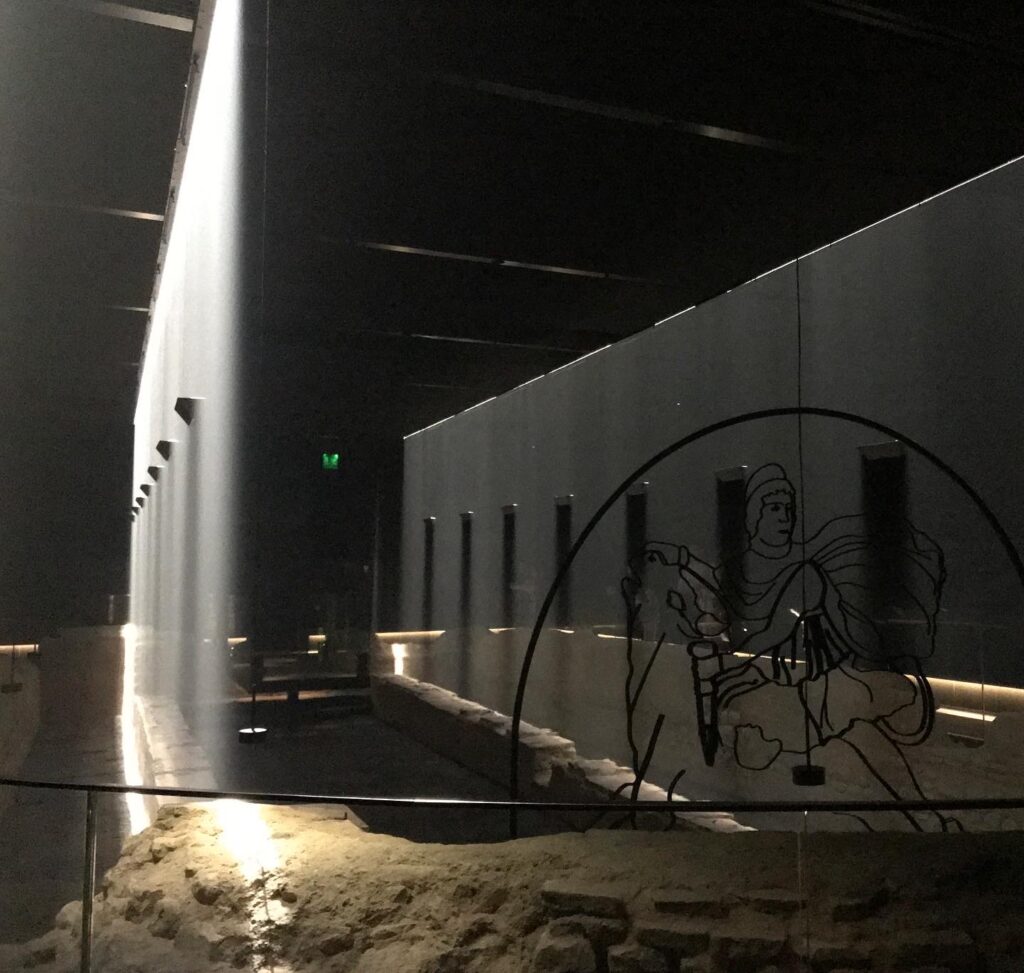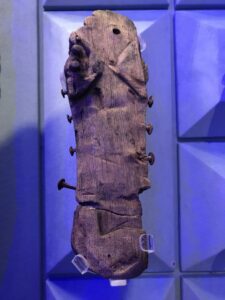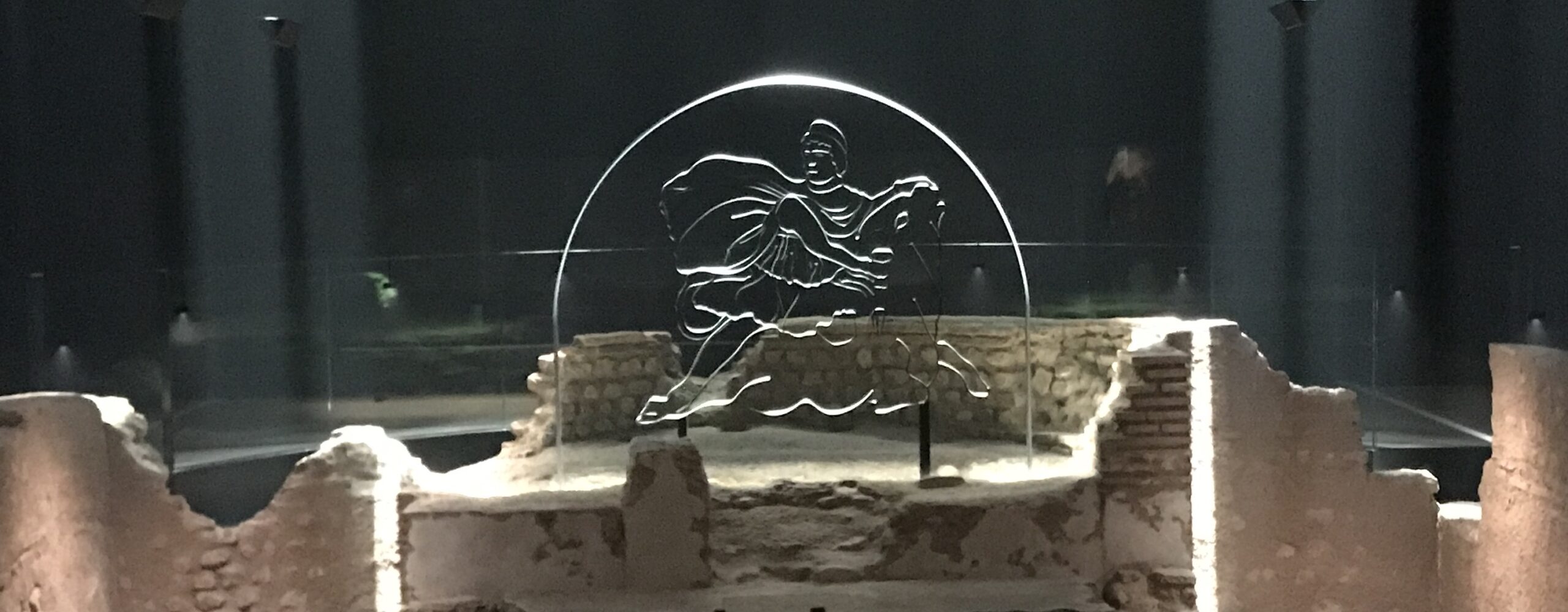
Under the Bloomberg European headquarters building in the City is the ‘London Mithraeum’, a glimpse into an obscure part of Roman London.
Obscure not just because many of the rituals of the cult/religion of Mithras are unknown to us – these rituals were communicated from initiates to novices by speech and example rather than being written – but also because Mithraic temples were underground, dark spaces emulating caves, where the mysteries of the cult were revealed.
These temples were not public spaces, but places of worship, ceremony, sacrifice, feasting; think ‘masonic lodge’ (although, obv, ignore the sacrificing) rather than ‘church’. The cult was popular among merchants and soldiers, and seems to have emerged/been adapted from Persian and Zoroastrian (and pre-Zoroastrian) beliefs. Londinium, as a trading centre and military post, would have had many mithraic devotees.
This Mithraeum seems to have been built in the third century (note, when Roman London was past its peak) next to what was then the river Walbrook, and it was rediscovered in 1954 when an archeological dig on a bomb site prior to redevelopment unearthed the outline. In the couple of weeks following the discovery and estimated 400,000 people visited the site. (MOLA’s oral history project here has some of those visitors recounting their experience.)
On the site was built a typical 1950s glass box – Bucklersbury House – and the temple was packed away into storage before being rebuilt in the 1960s on Queen Victoria Street. It’s fair to say that this was an unloved, pretty much unvisited, spot, raised up on a concrete level just by a bus stop.
As part of the Bloomberg construction – a huge triangular plot bounded by Walbrook, Queen Victoria Street and Cannon Street – the previously relocated temple was again ‘deconstructed’ and reinstituted in its original location, and the ‘Mithraeum’ attraction created.
On the ground floor entrance level there are some of the tens of thousands of artefacts and pottery shards that were found during the building of the new HQ. Because the site includes the valley of the Walbrook, the waterlogged conditions had preserved many organic objects, such as the wooden sole of a Roman shoe.
(Just get your head round that, nearly 2,000 years ago this was on the foot of someone stomping around Londinium.) There were also over 400 waxed writing tablets, including the first known handwritten document from Britain.
One then goes down: 7 metres down in fact, a consequence of the literal layers of history that have raised the ground level over the past 18 centuries and the fact that the temple would have been below the street level of the city. There is an anteroom with displays that give context, and then one goes into a (unfortunately, slightly underwhelming) ‘immersive experience’ in the temple itself.
A platform surrounds and projects over the archeology, and to sit there and contemplate the space is rather humbling. We are but the present inhabitants of this city and innumerable lives have lived in this space before us, and innumerable others will live here after we are gone.
The Mithraeum is free to visit. Full details here.
